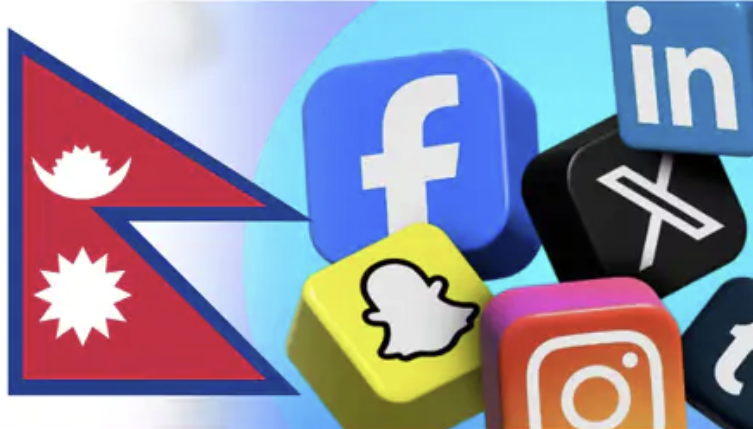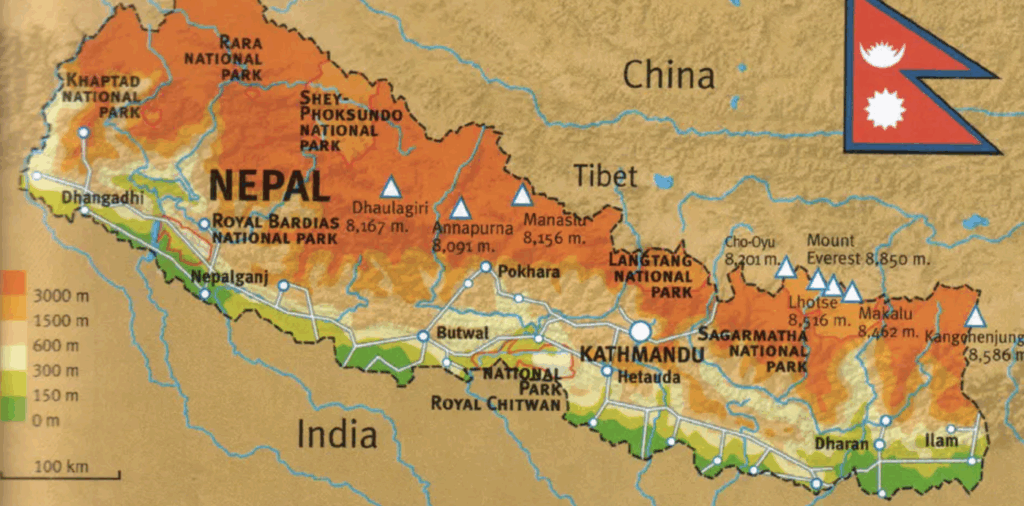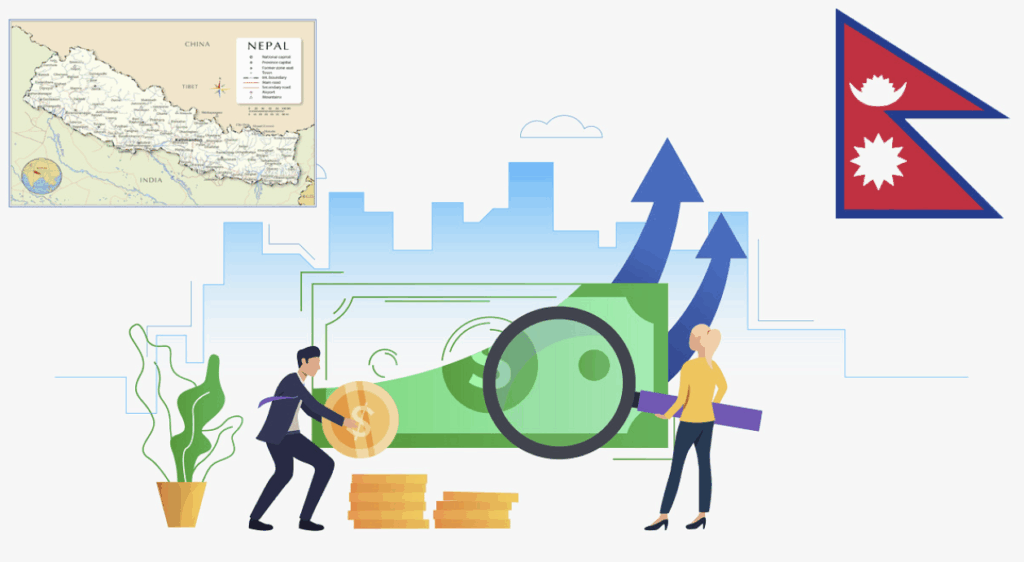Techno(demo)cracy in action: How a five-day app blackout lit a Gen Z online movement in Nepal

Over the past two weeks, Nepal’s government has sought the right decision to regulate online space. The brought decision prompted a large, youth-led response. A government’s order issued on 4 September blocked access to 26 social platforms, from Facebook, Instagram and YouTube to X and WhatsApp, after the companies failed to register locally under Nepal’s rules for digital services. Within the next five days, authorities lifted the ban, but it was too late: tens of thousands of mostly young Nepalis, organized with VPNs, alternative chat apps and gaming-era coordination tools, forced a political reckoning that culminated in the burning of parts of the parliament complex, the resignation of Prime Minister K.P. Sharma Oli on 9 September, and the appointment of former chief justice Sushila Karki to lead an interim administration.
The trigger: A registration ultimatum meets a hyper-online society
The ban didn’t arrive from nowhere. Nepal has been building toward platform licensing since late 2023, when the government issued the Social Media Management Directive 2080 requiring platforms to register with the Ministry of Communication and Information Technology (MoCIT), designate a local contact, and comply with expedited takedown and cooperation rules. In early 2025, the government tabled a draft Social Media Bill 2081 in the National Assembly to convert that directive into an effective statute. International legal reviews, including UNESCO-supported March 2025 assessment and an analysis, praised the goal of accountability but warned that vague definitions, sweeping content-removal powers and weak independence could chill lawful speech.
Against that backdrop, the cabinet and courts have put into practice the bill draft. On 28 August 2025, authorities gave major platforms seven days to register with the Ministry of Communication and Information Technology (MoCIT); on 4 September, the telecom regulator moved to block unregistered services. Nepal’s government listed the 26 services covered by the order (including Facebook, Instagram, X, WhatsApp, YouTube, Reddit, Snapchat and others), while TikTok, Viber, Witk, Nimbuzz and Popo Live had registered and were allowed to operate. Two more (Telegram and Global Diary) were under review.
Why did the order provoke such a strong reaction? Considering the baseline, Nepal had about 14.3 million social-media user identities at the start of 2025, roughly 48% of the population, and internet use around 56%. A society in which half the country’s people (and a significantly larger share of its urban youth) rely on social apps for news, school, side-hustles, remittances and family ties is a society in which platform switches are not merely lifestyle choices; they’re digital infrastructure, and it is important to stress the ‘generation gap’ to understand this.
The movement: Gen Z logistics in a blackout world
What made Nepal’s youth mobilisation unusual wasn’t only its size and adaptability, but also the speed and digital literacy with which organisers navigated today’s digital infrastructure; skills that may be less familiar to people who don’t use these platforms daily. However, once the ban hit, the digitally literate rapidly diversified their strategies:
- VPNs’ demand exploded. Proton’s censorship observatory recorded an 8,000% surge over baseline in Nepal sign-ups beginning 4 September, consistent with independent tech press findings.
- Alt-messaging and community hubs: With legacy apps dark, Discord emerged as a ‘virtual control room,’ a natural fit for a generation raised in multiplayer servers. Despite the ban, the movement’s core group (Hami Nepal) organised on Discord and Instagram. Several Indian outlets and the Times of India claimed that more than 100,000 users converged in sprawling voice and text channels to debate leadership choices during the transition.
- Peer-to-peer and ‘mesh’ apps: Encrypted, Bluetooth-based tools, prominently Bitchat, covered by mainstream and crypto-trade press, saw a burst of downloads as protest organisers prepared for intermittent internet access and cellular throttling. The appeal was simple: it works offline, hops device-to-device, and is harder to block.
- Locally registered holdouts: Because TikTok and Viber had registered with MoCIT, they remained online and quickly became funnels for updates, citizen journalism and short-form explainers about where to assemble and how to avoid police cordons. Nepal Police’s Cyber Bureau, alarmed by the VPN stampede, publicly warned users about indiscriminate VPN use and data-theft risks; advice that landed with little force once crowds were already in the streets.
The logistics looked like distributed operations: a core group tasked with sourcing legal and medical aid; volunteer cartographers maintaining live maps of barricades; diaspora Nepalis mirroring clips to international audiences; and moderators trying (often failing) to keep chatrooms free of calls to violence.

The law: What Nepal is trying to regulate and why it backfired?
The draft Social Media Bill 2081 and the 2023 Directive share a broad structure:
- Mandatory registration with MoCIT and local point-of-contact;
- Expedited removal of content deemed ‘unlawful’ or ‘harmful’;
- Data cooperation requirements with domestic authorities;
- Penalties for non-compliance and user-level offences include phishing, impersonation and deepfake distribution.
Critics and the youth movement found that friction was not caused by the idea of regulation itself, but by how it was drafted and applied. UNESCO-supported March 2025 assessment and an analysis of the Social Media Bill 2081 flagged vague, catch-all definitions (e.g. ‘disrupts social harmony’), weak due process around takedown orders, and a lack of independent oversight, urging a tiered, risk-based approach that distinguishes between a global platform and a small local forum, and builds in judicial review and appeals. The Centre for Law and Democracy (CLD) analysis warned that focusing policy ‘almost exclusively on individual pieces of content’ instead of systemic risk management would produce overbroad censorship tools without solving the harms regulators worry about.
Regarding penalties, public discussion compared platform fines with user-level sanctions and general cybercrime provisions. Available news info suggests proposed platform-side fines up to roughly USD 17,000 (EUR 15,000) for operating without authorisation, while user-level offences (e.g. phishing, deepfakes, certain categories of misinformation) carry fines up to USD 2,000–3,500 and potential jail terms depending on the offence.
The demographics: Who showed up, and why them?
Labelling the event a ‘Gen Z uprising’ is broadly accurate, and numbers help frame it. People aged 15–24 make up about one-fifth of Nepal’s population (page 56), and adding 25–29 pushes the 15–29 bracket to roughly a third, close to the share commonly captured by ‘Gen Z’ definitions used in this case (born 1997–2012, so 13–28 in 2025). Those will most likely be online daily, trading on TikTok, Instagram, and Facebook Marketplace, freelancing across borders, preparing for exams with YouTube and Telegram notes, and maintaining relationships across labour migration splits via WhatsApp and Viber. When those rails go down, they feel it first and hardest.
There’s also the matter of expectations. A decade of smartphone diffusion trained Nepali youth to assume the availability of news, payments, learning, work, and diaspora connections, but the ban punctured that assumption. In interviews and livestreams, student voices toggled between free-speech language and bread-and-butter complaints (lost orders, cancelled tutoring, a frozen online store, a blocked interview with an overseas client).
The platforms: two weeks of reputational whiplash
- Meta: after months of criticism for ignoring registration notices, it still has not registered in Nepal and remains out of compliance with the government’s requirements from the Social Media Bill 2081.
- TikTok, banned in 2023 for ‘social harmony’ concerns and later restored after agreeing to compliance, found itself on the legal side of the ledger this time; it stayed up and became a publishing artery for youth explainers and police-abuse documentation.
- VPN providers, especially Proton, earned folk-hero status. The optics of an ‘8,000% surge’ became shorthand for resilience.
- Discord shifted from gamer space to civic nerve centre, a recurring pattern from Hong Kong to Myanmar that Nepal echoed in miniature. Nepalis turned to Discord to debate the country’s political future, fact-check rumours and collect nominations for the country’s future leaders. On 12 September, the Discord community organised a digital poll for an interim prime minister, with former Supreme Court Chief Justice Sushila Karki emerging as the winner. The same features that facilitate raids and speed-runs, voice, low-latency presence, and channel hierarchies, make for a capable ad-hoc command room. The Hami Nepal group’s role in the event’s transitional politics underscores that shift.

The economy and institutions: Damage, then restraint
The five-day blackout blew holes in ordinary commerce: sellers lost a festival week of orders, creators watched brand deals collapse, and freelancers missed interviews. The violence that followed destroyed far more: Gen Z uprising leaves roughly USD 280 million / EUR 240 million in damages, estimates circulating in the aftermath.
On 9 September, the government lifted the platform restrictions; on 13 September, the news chronicled a re-opening capital under interim PM Karki, who spent her first days visiting hospitals and signalling commitments to elections and legal review. What followed mattered: the ban acknowledged, and the task to ensure accountability was left. Here, the event gave legislators the chance to go back to the bill’s text with international guidance on the table and for leaders to translate street momentum into institutional questions.
Bottom line
Overall, Nepal’s last two weeks were not a referendum on whether social platforms should face rules. They were a referendum on how those rules are made and enforced in a society where connectivity is a lifeline and the connected are young. A government sought accountability by unplugging the public square and the public, Gen Z, mostly, responded by building new squares in hours and then spilling into the real one. The costs are plain and human, from the hospital wards to the charred chambers of parliament. The opportunity is also plain: to rebuild digital law so that rights and accountability reinforce rather than erase each other.
If that happens, the ‘Gen Z revolution’ of early September will not be a story about apps. It will be about institutions catching up to the internet, digital policies and a generation insisting they be invited to write the new social contract for digital times, which ensures accountability, transparency, judicial oversight and due process.

